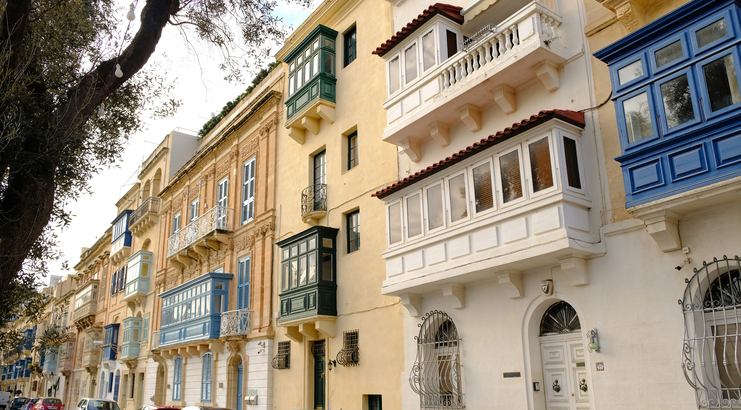Plans put forward by the Maltese Government to hit emissions targets by increasing the stock of electric vehicles on Maltese roads may rely on a significant jump in charging infrastructure, according to industry stakeholders.
Earlier this week, Minister for Environment Aaron Farrugia stated that Malta needs to add 9,000 electric vehicles (EVs) every year to reach the 19 per cent reduction over 2020 emissions, as put forward in the country’s proposal to the EU.
However, despite an increase in the grant given to those purchasing such vehicles from €7,000 to €9,000, potential buyers may be put off by an entirely different stumbling block – chargers for the vehicles.
Marcella Tunariu, Kind’s Auto Sales Ltd’s marketing manager, says the charging infrastructure is “a big issue”.
“Realistically, mass adoption of EVs is a goal that can only be achieved through Government intervention,” she says.
“We need an increase in public charging points – a big one. There aren’t all that many charging bays currently available when considering the existing number of EVs. That problem will only get worse without large investment.”
She notes that, currently, EVs are only attractive to those who have a garage they can park and charge it in, and suggests incentives for businesses to install charging bays in their office building garages.
“It would be amazing if EV owners could go to the office, plug it in, and leave work to find a fully charged car.”
Luke Zammit, founder of the Electric Vehicles Malta Community on Facebook, which boasts almost 3,000 members, agrees that infrastructure is the element Malta lags far behind in.
“I would recommend an EV to anyone with a garage in a heartbeat,” he says, “but if you don’t have one, you need to be ready for the occasional spot of trouble.”
He explains that when EVs first came to Malta, there were 50 pillars with a hundred chargers (each pillar has two chargers).
“Today, we have the exact same number, but used by many, many more cars.”
A tender published by Transport Malta in 2018, tabled in Parliament in February as it was not publicly available through the authority’s website or the public procurement platform, would have seen a net increase of 130 charging pillars.
However, work seems to have stalled on the new infrastructure, with the physical pillars set up but not able to be used.
Another problem Mr Zammit mentions is the lack of enforcement on the use of the existing charging bays, which are often used as regular parking bays by both EV and regular vehicle owners.
“This happens a lot, and, in defence of drivers of regular cars, these charging bays are not clearly marked. The ones in Sliema, for example, have completely faded.”
There is no protocol on the steps to be taken when such a charging bay is being incorrectly used, with the public forced to call the local police who will in turn try and contact the vehicle’s owner.
Mr Zammit suggests the introduction of new licence plates to clearly mark EVs, saying that modern ones are practically indistinguishable from the same models with internal combustion (ICE) engines.
“My electric Peugeot 208, for example, is the exact same as the non-electric version, making it very difficult to identify. Why don’t number plates make the difference clear, so that wardens can enforce accordingly?”
The cash grant of €9,000 is an attractive one, on par with that offered by Germany, which however limits half of it to a tax rebate.
“The problem there,” explains Mr Zammit, “is that it can take ages to actually receive the grant – it can take anything from two weeks to nine months.”
One measure he believes can help is if the Government paid car dealers directly, with the buyer paying only the purchase price less the grant.
“For most people, €9,000 is a lot of money to take out of pocket and remain without for months on end,” he says.
However, he is unequivocal on how advantageous EVs can be.
“When taking the grant into account, the difference between my electric car and the ICE version is only €5,000 – which I regain in licence and fuel costs in just four years.”
That’s without taking into account maintenance, which is far cheaper.
For example, EVs brake by a process called regenerative braking, therefore not relying on the traditional friction brakes. This allows the brake pads to last far longer than usual.
To add to this EVs need no oil changes, and there is no gear box or timing belt.
M Tunaria agrees that the grant is “definitely very attractive”, though she calls for it to remain open for the entire years, no matter the take up. She points out that this is why it can take so long for people to receive their grant – the year’s allocation would have been used up.
However, she makes it clear that without better infrastructure, problems will remain.
“It’s some €20,000 per car. People are going to think long and hard before spending that kind of money. It needs to make sense.”
European Parliament adopts regulation making it easier for companies to be paid on time
The maximum credit term under the new Late Payment Regulation is to up to 120 days, for some sectors
French ATC strike forces Ryanair to cancel over 300 flights, affecting 50,000 passengers
The low-cost carrier is demanding the EU carries out reforms to ensure travel continues undisrupted
Valletta ranks 8th most expensive European capital city to live in – study
While London is the most expensive, Bucharest is the most affordable






